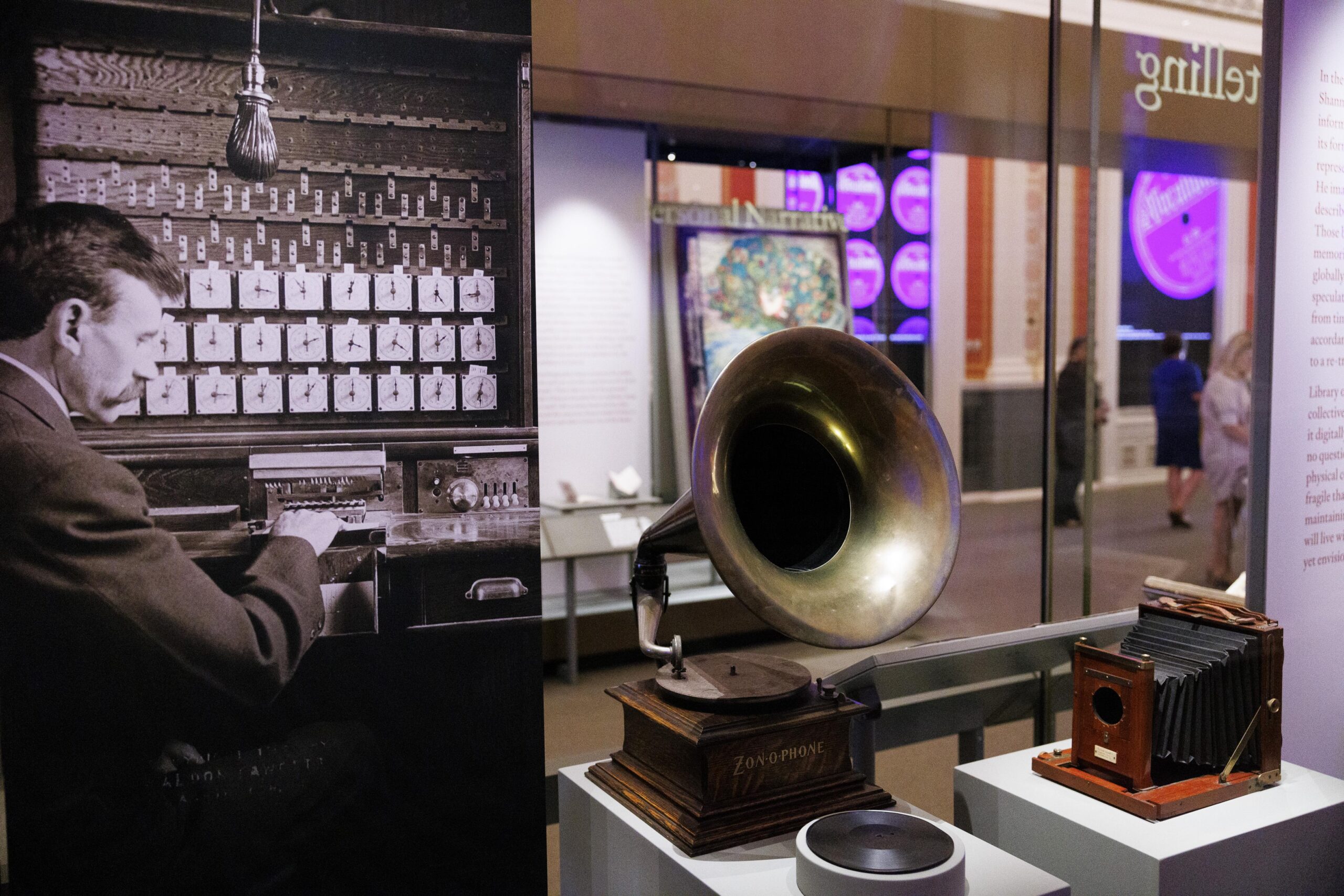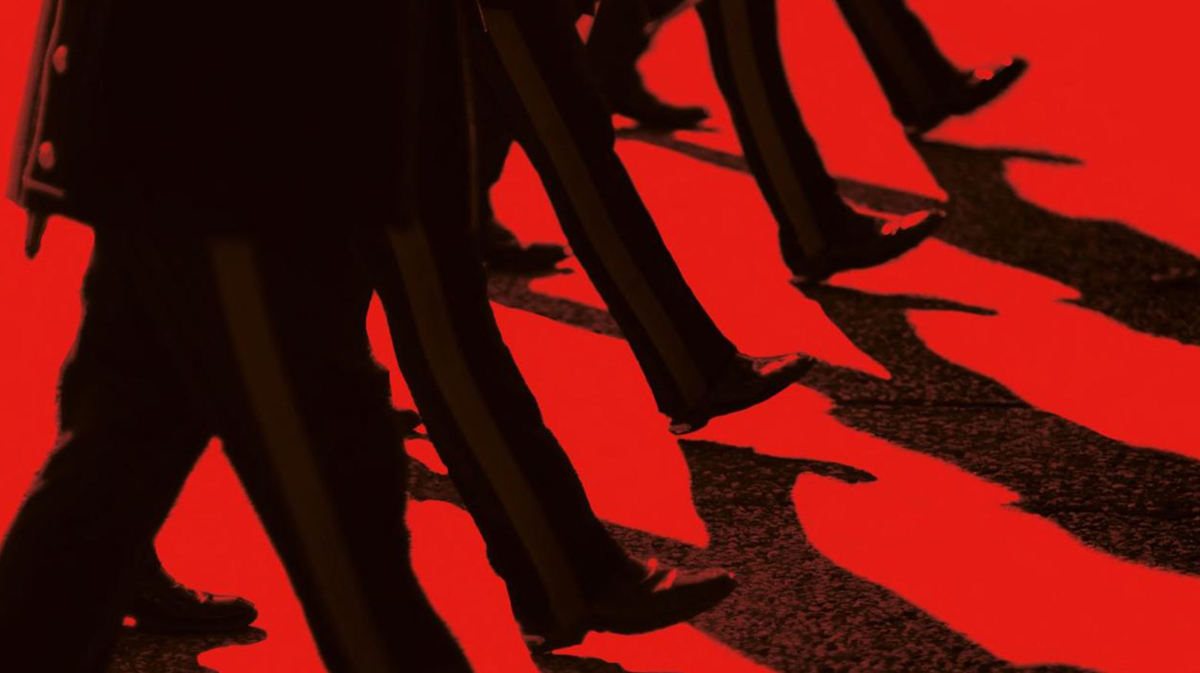The Library of Congress (LC) has opened its vaults to showcase and celebrate some of its most historically significant holdings-many of which are on public display for the first time.
A new exhibition, “Collecting Memories: Treasures from the Library of Congress,” explores how cultures preserve memory, including the role of LC in preserving collective memories representing entire societies, important moments in history, and individual lives. The exhibition draws from the library’s rich holdings of Americana and international collections, bringing together a mix of voice recordings, moving images, diaries, manuscripts, photographs, art, maps, books, and more.
Among the collection are Abraham Lincoln’s handwritten draft of the Gettysburg Address and the contents of Lincoln’s pockets when he was assassinated, recordings of contemporary Native poets discussing an original work on the theme of place and displacement, gathered as part of former U.S. Poet Laureate Joy Harjo’s project “Living Nations, Living Words,” James Madison’s crystal flute, photos of J. Robert Oppenheimer’s first test of the nuclear bomb, cuneiform tablets dating back to 3,200 BCE, and a copy of the golden “Sounds of Earth” discs hurtling into deep space on the Voyager missions.
“The stories told by these items still inspire and amaze, decades or even centuries after they were created,” said Librarian of Congress Carla Hayden. “The Library of Congress holds more than 178 million items in its collections-perhaps the most comprehensive collection of human knowledge ever assembled in one place. We invite you to experience the depth and breadth of what the Library collects, preserves and makes available in our new Treasures Gallery.”
The Treasures Gallery will show visitors how LC is constantly collecting, preserving, and serving a wide variety of collections for the American people. The new gallery is devoted to ongoing exhibitions that showcase treasures from across the national library’s collections. It’s the first major component of a multiyear plan to create a new visitor experience with new galleries, exhibitions, and interactive spaces.
More than 120 items are featured in the initial rotation of “Collecting Memories,” with additional items being rotated into the exhibition over time through December 2025. Other treasures from the exhibition include:
- Designs for the Washington Monument and the Vietnam Veterans Memorial.
- Photographs and writings from the AIDS Memorial Quilt archive.
- Audio recordings of contemporary Native poets discussing an original work on the theme of place and displacement, gathered as part of former U.S. Poet Laureate Joy Harjo’s project “Living Nations, Living Words.”
- Photographs and stories of refugees from wars in Iraq, Syria, Cambodia, and Vietnam, as well as the Holocaust.
- Oral histories documenting the Civil Rights Movement.
- A letter to Elizabeth Schuyler Hamilton from her father, documenting the threat of yellow fever in 1801, from the papers of Alexander Hamilton.
- Art and audio diaries documenting the COVID-19 pandemic, as well as letters and ephemera documenting the 1918 influenza pandemic.
- A landmark first map of the newly independent United States compiled, printed, and published in America by an American-Abel Buell in 1784. The Buell map is on deposit to the Library from David M. Rubenstein.
- The first printed map showing reasonably accurate geographic information about the Western U.S., from the expedition of Lewis and Clark, published in 1814.
- A dress made of 45 paper scrolls containing poems and illustrations paying homage to Cuban and American women poets, created by Ruth Behar and Rolando Estévez Jordán.
- Omar ibn Said’s handwritten autobiography in Arabic from 1831, telling the story of how he was captured in West Africa, enslaved and brought to South Carolina-the only known memoir of its kind.
- Pioneering civil rights and women’s rights activist and educator Mary Church Terrell’s draft for her autobiography, “A Colored Woman in a White World.”
- Playwright Neil Simon’s notebook including “The War of the Rosens” and what appears to be his first notes for what would become “Brighton Beach Memoirs.”
- Photos documenting the first nuclear bomb explosion overseen by J. Robert Oppenheimer, and a harrowing account of the bomb’s devastation from a Japanese teacher who survived the U.S. bombing of Hiroshima in 1945.
- An audio history covering the Great Depression and World War II by journalists Edward R. Murrow and Fred Friendly.
- A golden record of “The Sounds of Earth” identical to two records sent into space on NASA’s Voyager I and II missions in 1977.
- Sigmund Freud’s papers documenting his thoughts on how the brain processes memories.
- One of the earliest printed texts in a North American Indigenous language, a dual-language catechism written in both Spanish and Timucua, a complex and now extinct language, by Franciscan missionary Francisco Pareja in 1627.
- Photographer Frances Benjamin Johnston’s camera. She was among the first American women to achieve prominence as a photographer.
- Born-digital files containing records of history that can be difficult to maintain as technology evolves.
- Oscar Hammerstein’s lyric sheet working out the words for the song “Do-Re-Mi” during the creation of the musical “The Sound of Music.”
- Cuneiform school tablets on clay from between 2200 and 1900 BC, reflecting what is arguably the oldest writing system in the world with script invented by the Sumerians in Mesopotamia.
“Collecting Memories: Treasures from the Library of Congress,” opened June 13 as the inaugural exhibition in the new David M. Rubenstein Treasures Gallery and will be on view through December 2025 in LC’s Thomas Jefferson Building.
Subscribe to the I Love Libraries newsletter! You’ll get monthly updates on library news, advocacy updates, book interviews, book info, and more!
Photo: An original Zonophone from the Universal Talking Machine Company. Photo by Shawn Miller/Library of Congress.




